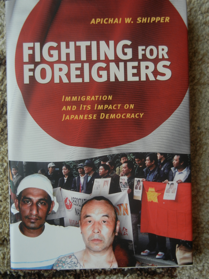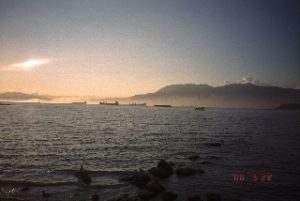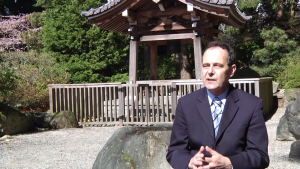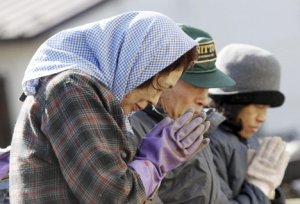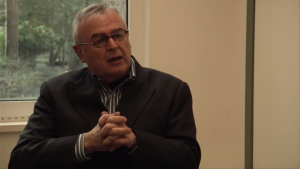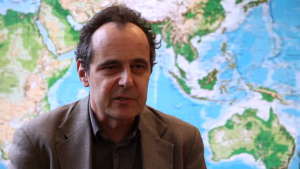Foreign Workers and the Wildfires of Democracy in East Asia
Memo #111 – As democratic movements spread to the Middle East and North Africa, hopeful observers and nervous authoritarian leaders wondered when they will reach Asia. In fact, they already arrived there in the late 1980s. But another East Asian democratic revolution has been taking place over the past decade, brought about by foreign workers.
Through Taiwan is the Shortest Route between Japan and China
Memo #98 – Joint ventures between Taiwanese and Japanese firms in China survive longer than companies formed only with Japanese capital. Research shows that Japanese firms have a better chance of success in China through alliances with their Taiwanese partners. The survival rate (which measures firms or joint ventures started in the 1990s up to the year 2005) in China has been around 68 per cent when Japanese companies entered the market alone. But the rate is 10 per cent higher if they worked with Taiwanese corporations. Taiwan can play a critical role in trilateral relations and create a win-win-win environment.
Self-searching Migrants: Japanese Temporary Residents in Canada in the Age of High Mobility and Self-Reflexivity
Memo #94 – The term “self-searching” (自分探し – jibun-sagashi) has become a cliché in Japan since the early 1990s, when the high-growth period ended. Economic stagnation obliged many new university graduates to get unstable and unfulfilling jobs. Since then, an increasing number of young Japanese have become “self-searching migrants” forming a new category of trans-Pacific migration. Just as migrants around the world have for centuries, Japanese young people are embarking on journeys across the Pacific in search of a professional or personal calling.
「自分探し」のグローバル移動: 流動化と自省の時代におけるカナダの日本人一時滞在者たち
Memo #94 – 「自分探し」という語は、1990年代初頭以来、日本であまりに安直に使われてきた決まり文句である。この時期日本ではバブル経済が崩壊し、大卒者でさえ多くが不安定な、やり甲斐のない仕事に就かざるを得なくなった。以来、「自分探しのための移動」をする若者たちは次第に増えていき、太平洋を越えて移動する者たちの中で新カテゴ
リーを形成している。
Japan One Month after the Earthquake (Video Interview with David Edgington)
Memo #72 – One month after the March 11, 2011 Japan earthquake, we followed up with Japanese geography expert David Edgington. He characterized the first month with emergency response, learning, and information gathering. He says most of the major infrastructure has been reconstructed. But getting food and essential services to those affected remains a constant challenge. In the second month, the recovery stage will begin. This includes removing massive amounts of rubble and improving the health of survivors. There will also be efforts to build temporary housing to accommodate about 150,000 survivors who are in evacuation centres, including school gymnasiums.
Japanese Buddhism After the Earthquake: Memorials, Spiritual Comfort, and Emergency Response
Memo #69 – On the 7th day after the earthquake, at precisely 2:46 p.m., sirens rang out along Japan’s northeastern coast. Millions paused, placing their palms together and bowing their heads to remember those who were lost. In the Japanese Buddhist funerary cycle, the living perform rites for the dead every 7th day, continuing until the 49th day after death. Spirits of the deceased are believed to spend 49 days traveling to their next rebirth. As communities transition to harsh new realities, Japanese Buddhist groups are hard at work in expected ways, performing memorials for those lost and comforting those displaced. Perhaps unexpectedly, they are also organizing an effective emergency response.
Former Canadian Ambassador to Japan on the Crisis (Video Interview)
Memo #66 – In an exclusive interview, Joseph Caron discusses the crisis in Japan. As former Ambassador to Japan and Honorary Professor at the Institute of Asian Research, Caron is in a position to evaluate bilateral relations between Canada and Japan following the recent earthquake, tsunami, and problems at the Fukushima Dai’ichi nuclear power plant. Caron notes that the government of Canada has already offered a great deal of support to Japan and may be asked for their expertise on such things as urbanization and construction codes once rebuilding begins. Moreover, he hopes that Canada and Japan can sustain strong political relations during what may be a period of political uncertainty in Japan.
UBC Japanese Geography Expert – Full Video Interview
Memo #65 – UBC Japanese geography expert, Dr. David Edgington, compares the earthquake that struck Japan on March 11, 2011, dubbed the “Sendai Regional Earthquake,” with the Great Hanshin Earthquake of 1995. In his view, the Japanese government’s response to the Sendai Regional Earthquake is a textbook example of emergency response, indicating there have been lessons learned from Kobe.
Diverging Patterns for Incorporating Immigrants in Korea and Japan
Memo #56 – In the mid 2000s, Korea and Japan unveiled unprecedented proposals for immigrant incorporation. This included the Basic Act on the Treatment of Foreigners in Korea and the Ministry of Internal Affairs and Communications’ plan for Multicultural Coexistence Promotion in Local Communities in Japan. These plans acknowledged for the first time the need to manage foreigners settled within each country. But they also represented contrasting frameworks for their incorporation. In Korea, there was centralized rights-based legislation that targeted specific immigrant groups and in Japan, there were decentralized guidelines that prioritized community-based partnerships.
OECD’s PISA, Media Sensationalism, and Education Reform in Japan
Memo #47 – The OECD’s Programme for International Student Assessment (PISA), conducted every three years, has become a major event shaping education policy in many of the participating nations. The PISA report provides a comprehensive set of comparative data on 15 year old students’ performance, but its national rankings based on mean test scores in particular attract the most attention. Various policy actors use the rankings to affirm or scandalize ongoing education reform. The media is one of the key actors determining PISA rankings’ domestic impact, as they interpret them for the public.
